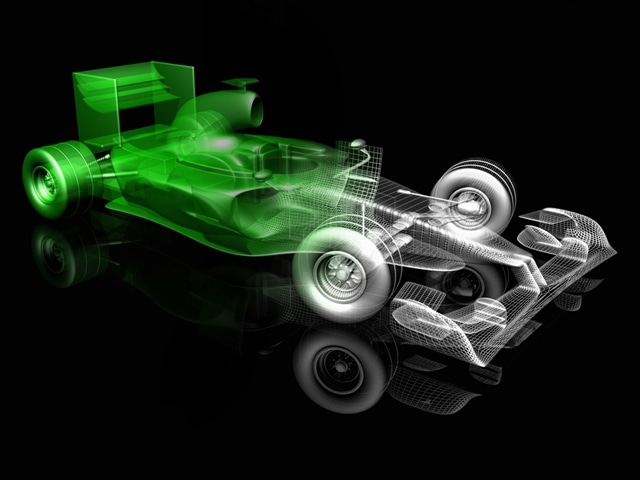By Kalwinder KaurDec 2 2013
Formula E is a new FIA championship scheduled to begin in 2014 with 10 teams. The FIA Formula E championship will feature Formula cars exclusively powered by electric energy.
All the participating teams have to use a common car developed by Renault along with Spark Racing Technologies according to the technical specifications set by FIA. Named as Spark-Renault SRT-01E, this car aims at achieving the boundaries while ensuring sustainability and cost-effectiveness.

Image credits: Photos.com.
Inside Formula E Cars
Listed below are the technical features of Formula E cars:
- Design – The car features optimized aerodynamics to facilitate overtaking, wide range of suspensions to meet the demands of racing on street circuits and high ride height sensitivity. The design of the car is compliant to safety regulations of FIA. Majority of the car parts are made of composite materials.
- Engine – The motor generator units linked only to the rear axle are designed by McLaren. Maximum of only two generator units are allowed to be used.
- Traction battery – The rechargeable energy storage system acts as a traction battery which supplies electric power to the power circuit and traction motor. In addition, any other battery connected to the power circuit is also considered to be a part of the traction battery system.
- Chassis – The chassis is made up of a carbon/aluminum honeycomb structure. The front and rear wings of the chassis are exclusively made from carbon.
- Brakes – Formula E cars have two separate hydraulic systems operated by the same pedal. The calipers are made of aluminum alloy.
- Suspension – Formula E car’s suspension system includes adjustable anti-roll bars, two- or four-way adjustable Koni dampers, front torsion bars suspension and rear spring suspension.
- Steering system – The car features non-assisted rack and pinion steering system. The steering wheel includes dashboard, gear change mechanism, clutch paddles and marshalling display.
- Wheels and tyres – Wheels of Formula E cars are designed according to championship specific wheel dimensions. These cars include bespoke 18" treaded Michelin tyres for use in dry and wet condition surfaces. The magnesium wheel rims have maximum front diameter of 650mm and rear diameter of 690mm.
- Electronics – A beacon receiver, CAN data acquisition pre-equipment, power supply management unit, data logging system, and FIA marshalling system are all fundamental components to this structure.
- Safety mechanism – Front, rear, side and steering column impact tests have been carried out in Formula E cars as per FIA safety standards. Other structures in the cars include an extinguisher system, wheel retainer safety cables and anti-intrusion survival cell protection panels.
- Sound system - Formula E cars will produce a modern, futuristic sound of approximately 80db at high speed.
- Power – Formula E has a maximum power of 200 kW in normal mode and 133 kW in power-saving mode. The car is designed to have maximum power during practicing and qualifying sessions. However, during racing, a power-saving mode will be applied with a push-to-pass system for allowing maximum power for a short duration.
- Performance – The maximum speed of Formula E car is estimated to be 225 km/h, and estimated acceleration is 0-100 km/h.
Conclusion
Motorsport has gone green to a certain level in the recent years, with F1 making efforts to mitigate greenhouse gas emissions from the cars by using hybrid technologies. In this regard, Spark-Renault SRT-01E is not an exception. This stunning new Formula E electric car, with its cool looks and positive effect on sustainability, will likely be the future of motorsport.
References
Disclaimer: The views expressed here are those of the author expressed in their private capacity and do not necessarily represent the views of AZoM.com Limited T/A AZoNetwork the owner and operator of this website. This disclaimer forms part of the Terms and conditions of use of this website.